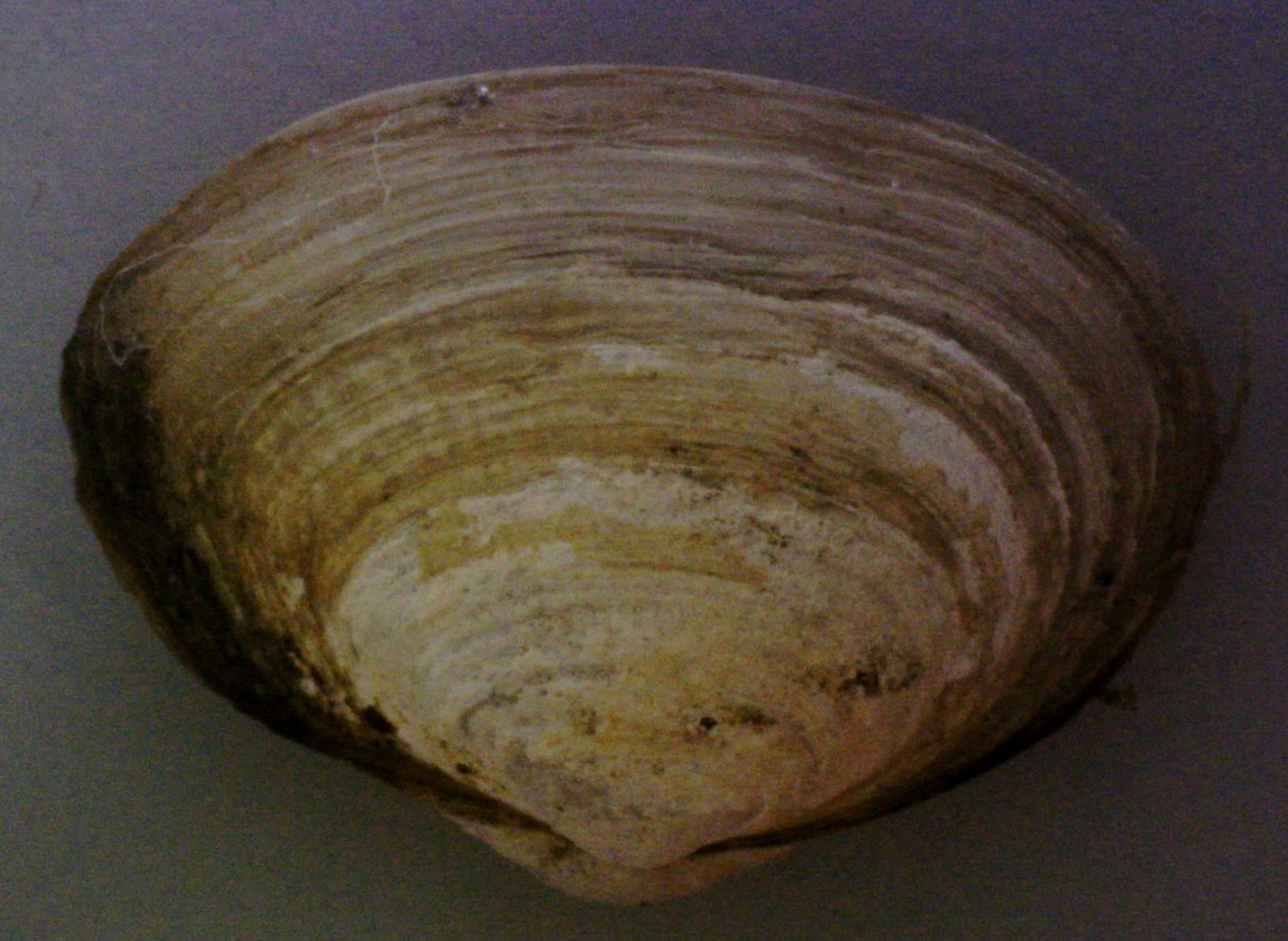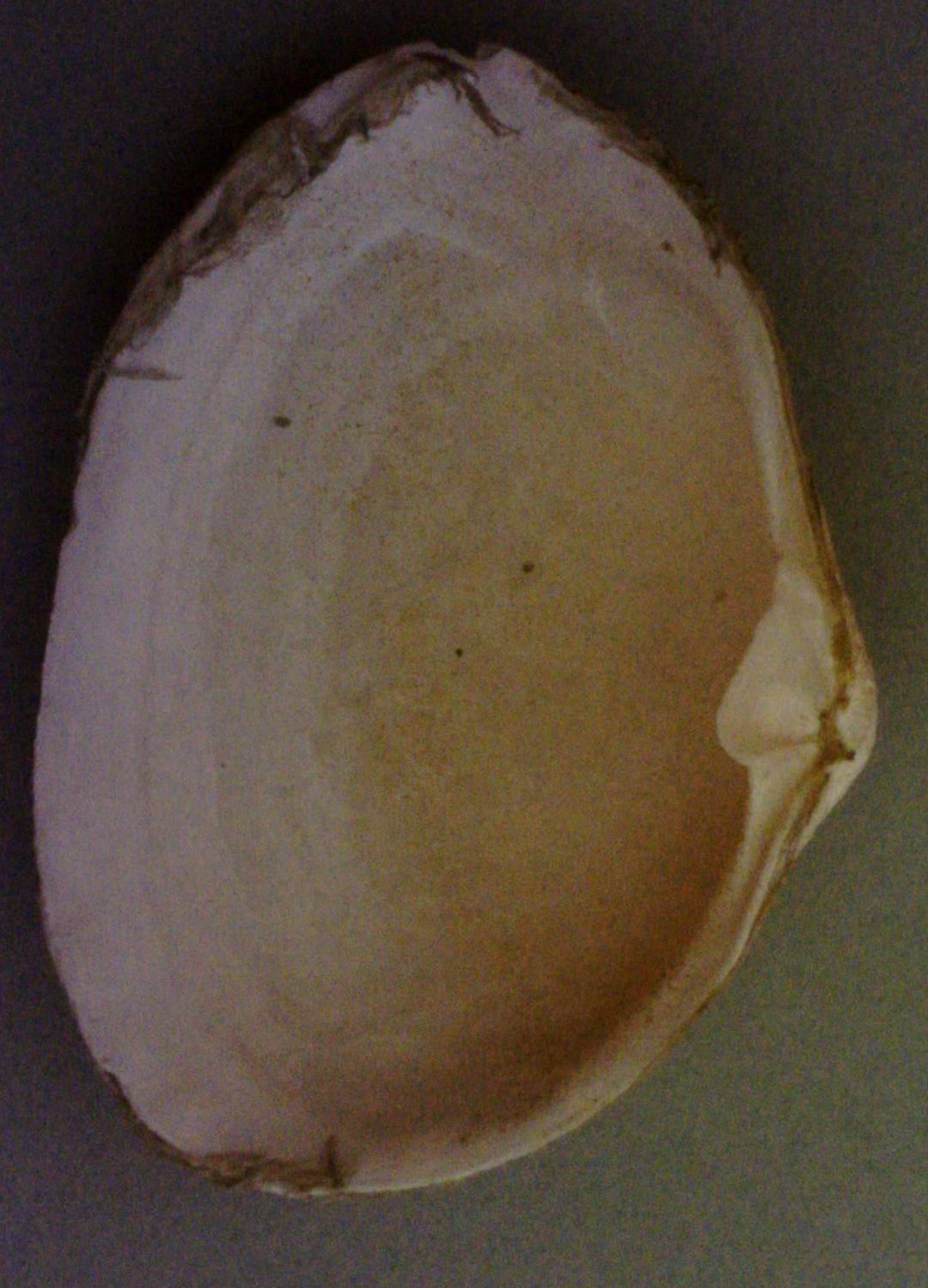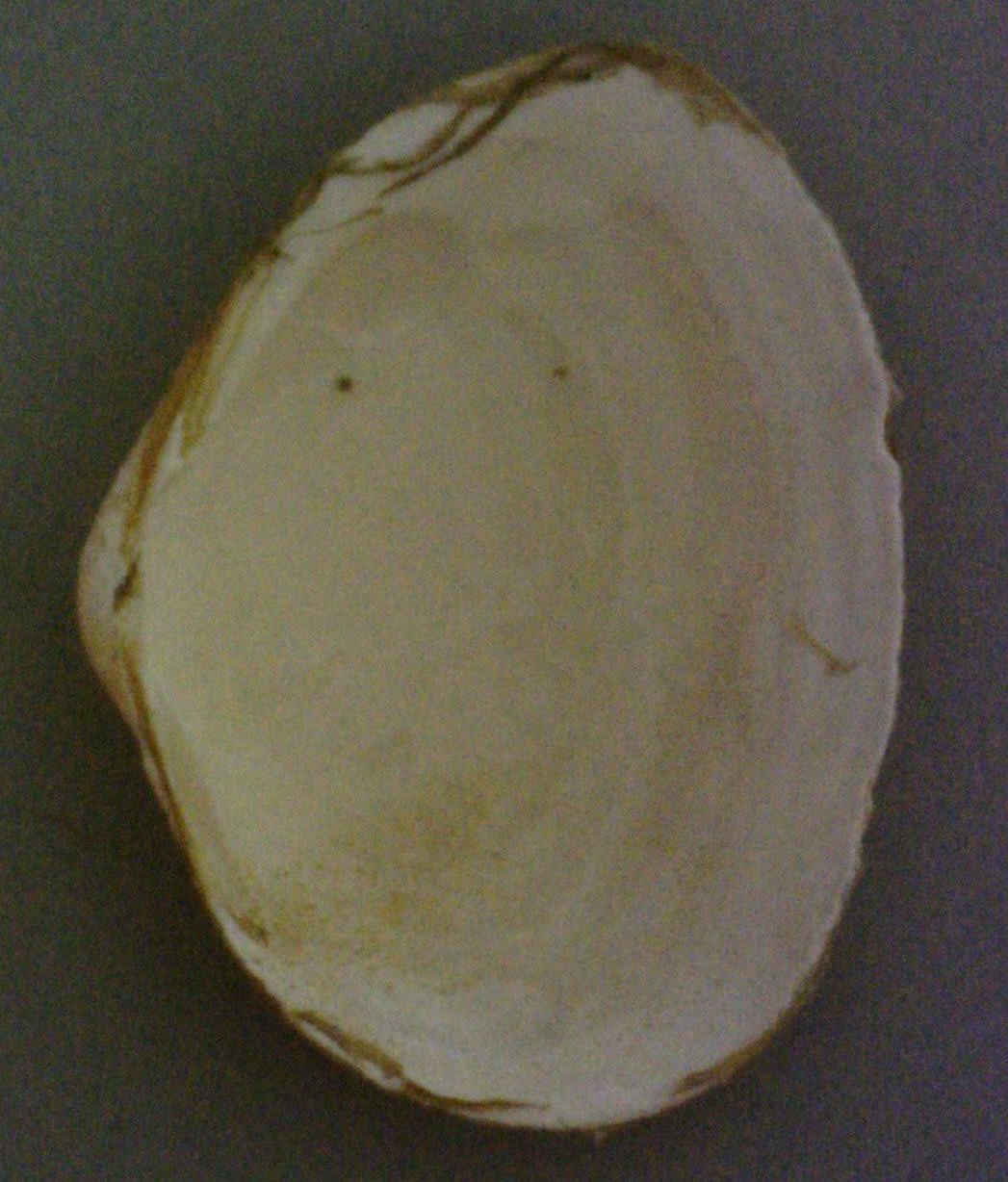Cryptomya californica (Conrad, 1837)Common name(s): California softshell clam, California glass mya |
|
| Synonyms: Cryptomya magna |  |
|
Subclass Heterodonta
Order Myoida
Superfamily Myoidea
|
|
| Cryptomya californica, 2 cm long, found alongside Neotrypaea californiensis burrows at Freeland Beach, Whidbey Island. | |
| (Photo by: Dave Cowles July 2020 ) | |
Description: Members of Order Myoida burrow and most have long siphons. The hinge has few teeth. Members of Family Myidae have an internal hinge ligament and a large projecting chondrophore in the left valve only (Photo). Cryptomya californica has a thin shell and a shallow, inconspicuous pallial sinus that is not as deep as it is wide. Its siphons are quite short but it may live buried up to 50 cm below the sediment surface by extending its siphons into the burrow of another animal. The white shell is smooth except for fine concentric lines and has a thin yellow-brown periostracum. The anterior and posterior ends are fairly similar in shape. The umbones are very close to the middle. The valves gape slightly at the posterior end. Length to 3.7 cm (usually less than 3).
How to Distinguish from Similar Species: Other members of Family Myidae such as Sphenia ovoidea and Mya arenaria have a pallial sinus at least as deep as wide. The umbones are anterior to the middle, and the posterior end of the shell is clearly different from the anterior.
Geographical Range: Northern Japan to Alaska and south to Peru.
Depth Range: Intertidal to 80 m
Habitat: Soft mud and sand.
Biology/Natural
History: This small
clam often extends its siphons
into the burrows of Neotrypaea
californica,Upogebia
pugettensis, or Urechis
caupo raher than to the sediment surface. It
also readily moves
to a different site. This species broods its young.
| Return to: | |||
| Main Page | Alphabetic Index | Systematic Index | Glossary |
References:
Dichotomous Keys:Carlton, 2007
Kozloff, 1987, 1996
General References:
Harbo,
1997
Kozloff,
1993
Lamb
and Hanby, 2005
Morris
et al., 1980
Scientific Articles:
Hiebert, T.C. 2013. Cryptomya californica.
in Hiebert, T.C., B.A. Butler, and A.L. Shanks (eds.), Oregon estuarine
invertebrates: Rudy's illustrated guide to common species, 3rd ed.
University of Oregin Libraries and Oregon Institute of marine Biology,
Charleston, OR
Lawry, E.V., 1987. Cryptomya californica (Conrad, 1837): observations on its habitat, behavior, anatomy, and physiology. Veliger 30: pp 46-54
Web sites:
General Notes and
Observations: Locations, abundances,
unusual behaviors:
|
The left valve in this species has an obvious chondrophore but the right valve does not. |
|
 |
 |
| The hinge of the left valve has a prominent projecting chondrophore. The anterior end of the shell is downwards in this photo. Shell length about 2 cm. | The right valve has no projecting chondrophore at the hinge. The anterior end of the shell is downward in this photo. Shell length about 2 cm. |
Authors and Editors
of Page:
Dave Cowles (2020): Created original page
CSS coding for page developed by Jonathan Cowles
Salish Sea Invertebrates web site provided courtesy of Walla
Walla University